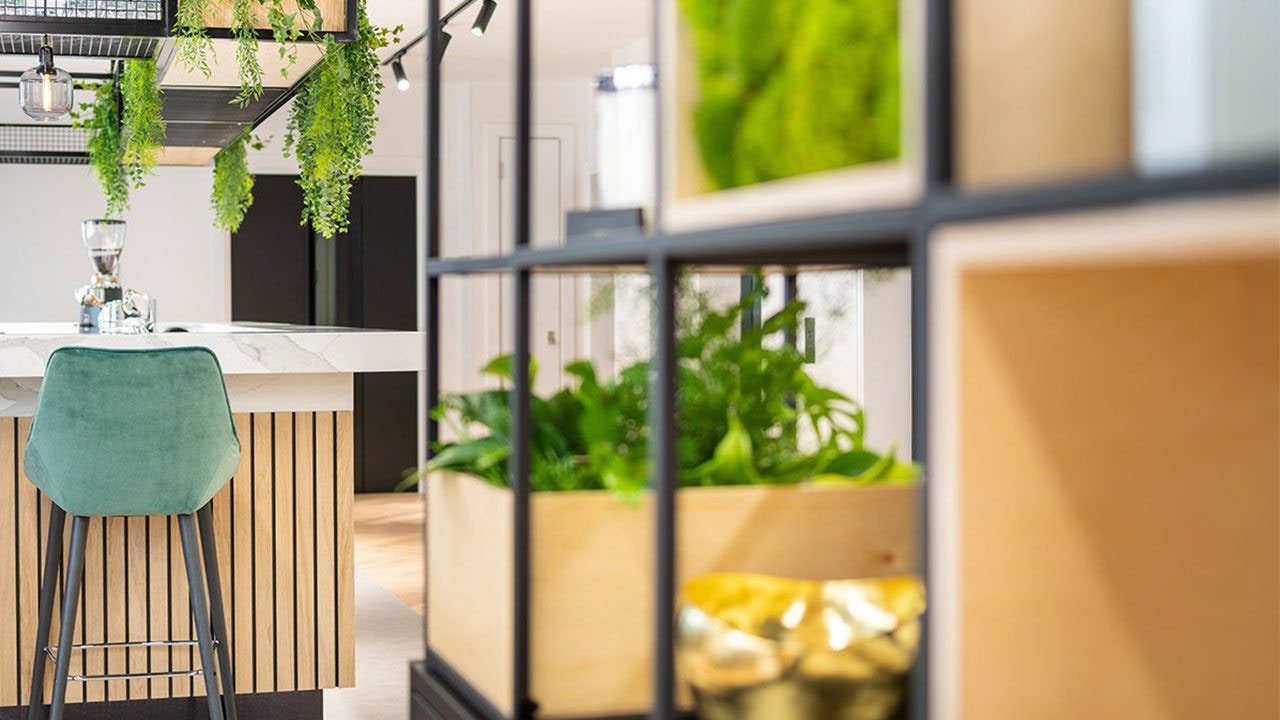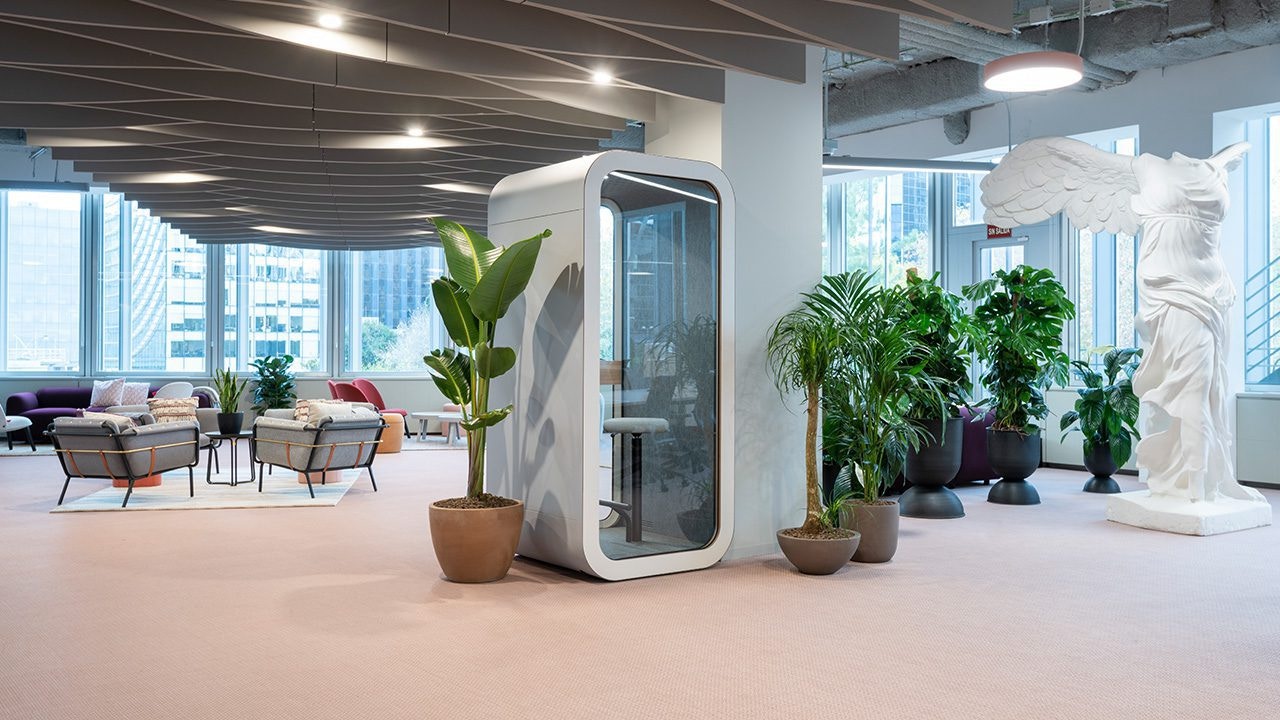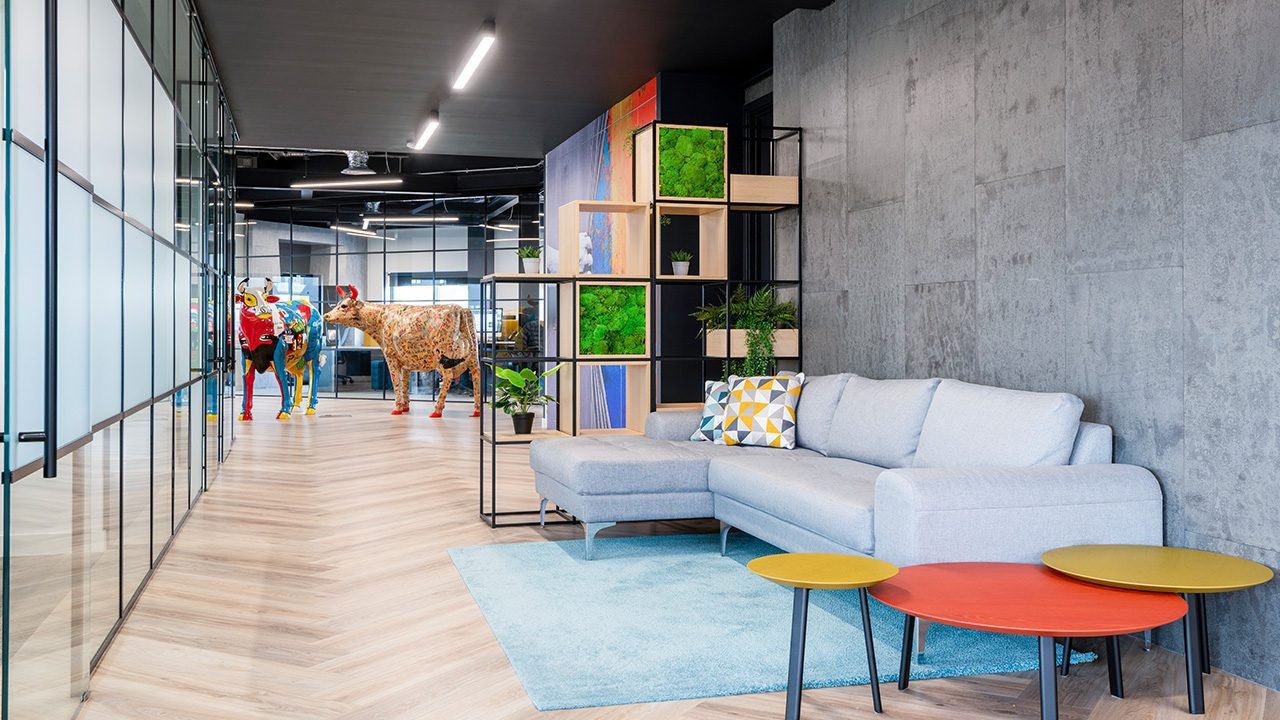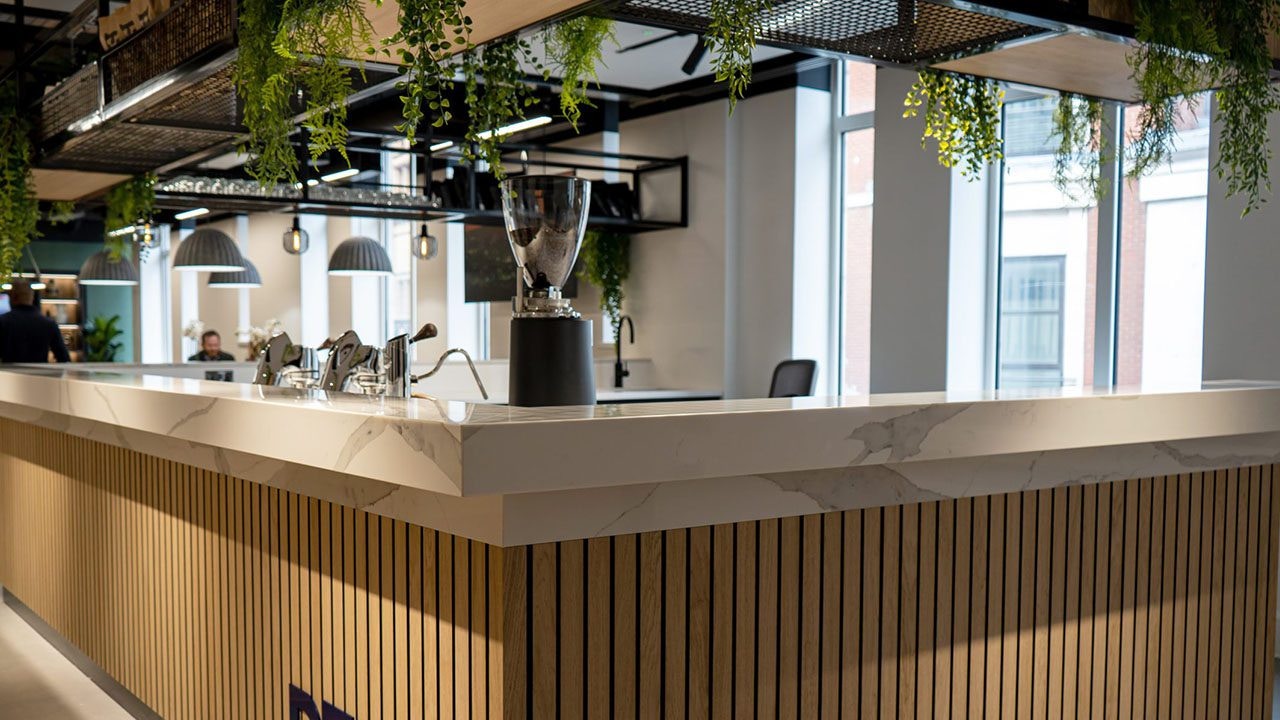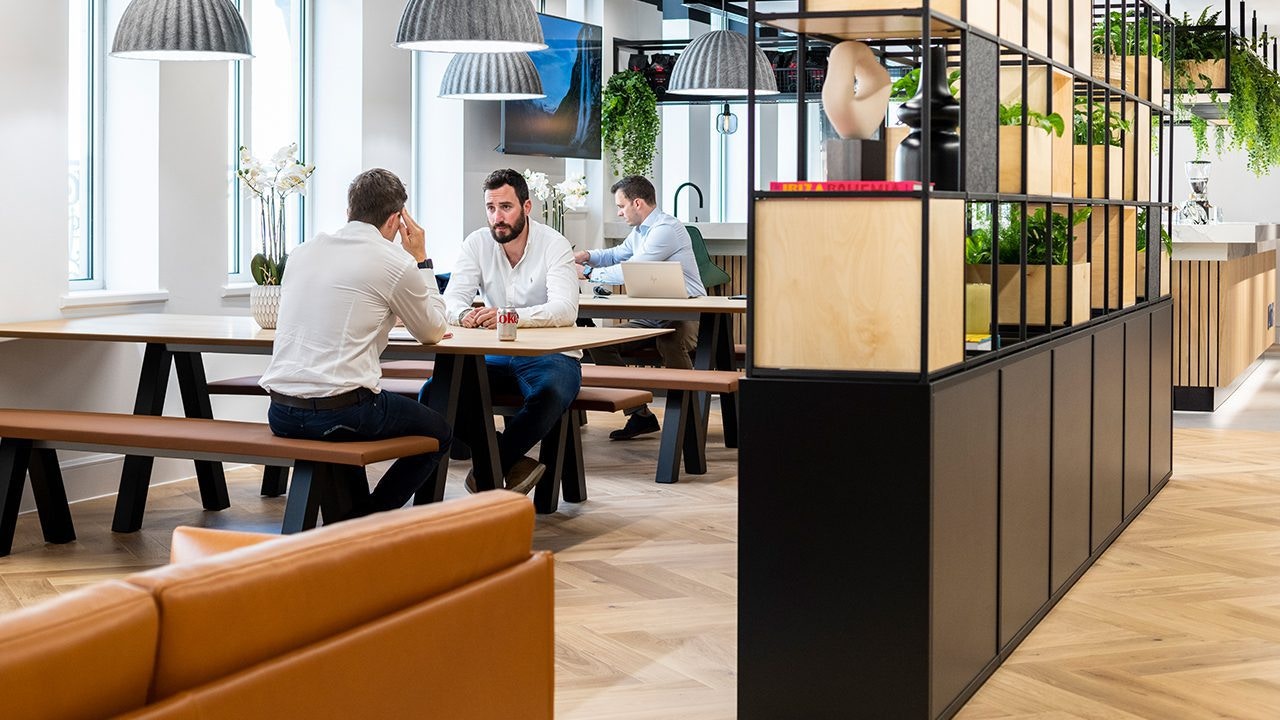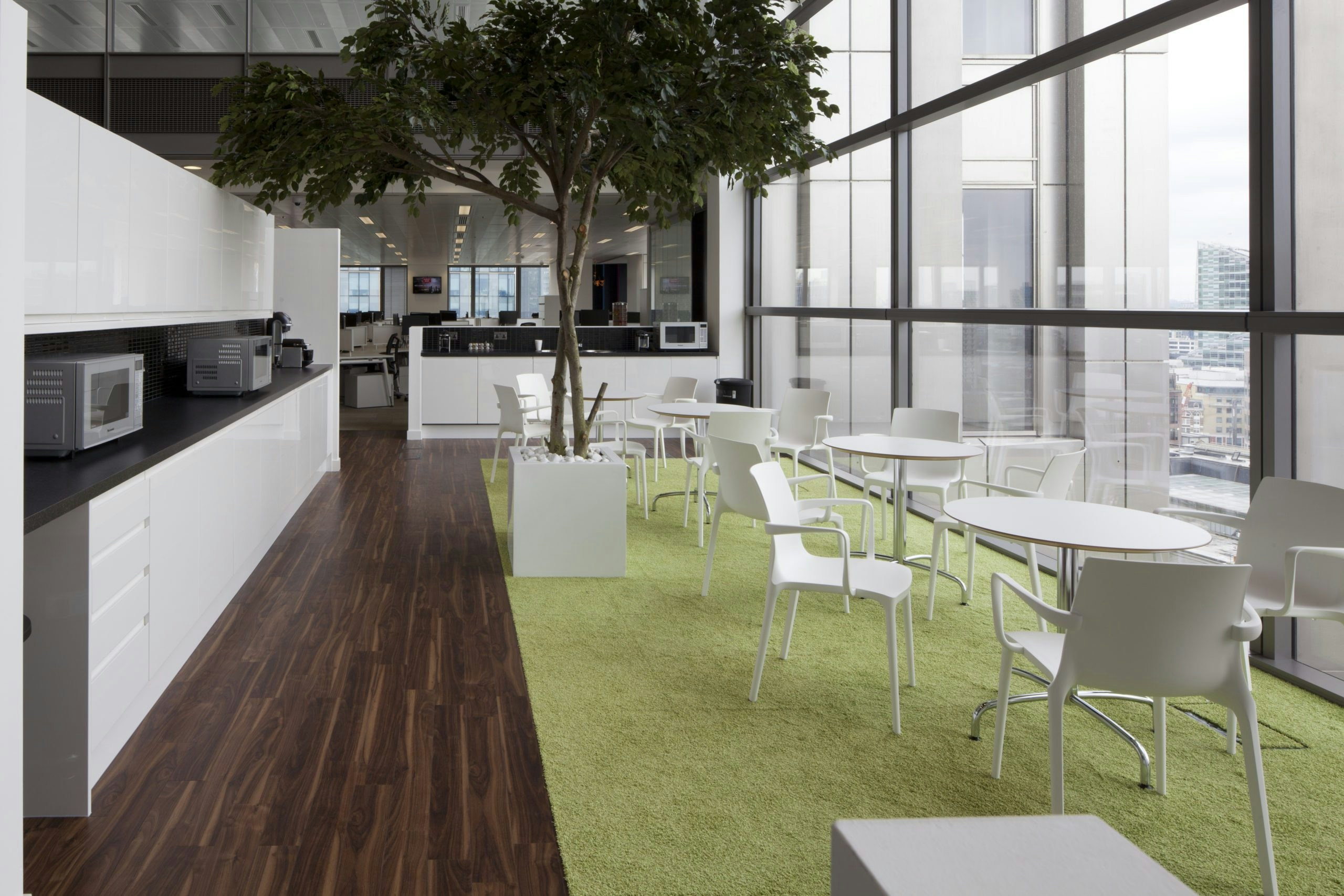- Towards Sustainable Offices
- What is Sustainable Office Design?
- The Importance of Sustainability in the Workplace
- Greening the Office with Biophilia
- Supporting New Ways of Working
- Helping Your Office Achieve Environmental Credentials
- FAQs
- Sustainability Resources and Further Reading
Towards Sustainable Offices
Sustainable office design aims to reduce the negative impact of buildings on the environment by incorporating innovative green methods and principles into the design and build of offices. These methods include energy-saving technology, sustainable materials, recycling, repurposing, and other elements that promote long-term ecological balance. In fact, the importance of sustainable offices has never been greater.
According to the World Economic Forum, the built environment, which includes offices, accounts for nearly 40% of global energy consumption and around a third of global greenhouse gas emissions. Newly constructed buildings are more energy efficient, but a real issue is with existing buildings. Indeed by 2050, we will be in a situation where 80% of buildings have already been built; so a major priority is decarbonising our existing building stock. As a response, companies are looking at ways to reduce their impact on the environment.
In this article, we will explore the latest trends, best practices, and ideas for sustainable office design. We will look at the benefits of green office design, eco-friendly office interiors, and net-zero office buildings. We will also examine case studies and success stories of companies that have implemented sustainable office design. By the end of this article, you should have a clearer understanding of the importance of sustainable office design and the steps you can take to create an eco-friendly and energy-efficient workplace.
